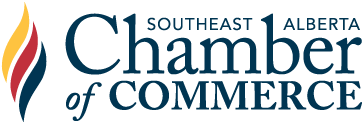Support to Ranchers in the Removal of Specified Risk Material (SRM)

Support to Ranchers in the Removal of Specified Risk Material (SRM)
Agriculture - Federal Policy
Since 2007 increased costs associated with the removal of specified risk material from cattle has caused significant cost disadvantages for Canadian cattle producers, processors and veterinarians. In order to maintain slaughter capacity and restore competitiveness in the Canadian cattle industry, the federal government should work to implement regulatory reform and policies to offset costs and harmonize regulations with the United States.
The devastating effect that bovine spongiform encephalopathy (BSE) has had on Canadian cattle producers is still a significant obstacle to the success of the cattle industry. In 2007, “enhanced animal health protection” requirements were introduced by the Canadian Food Inspection Agency (CFIA) designed “to help eliminate bovine spongiform encephalopathy (BSE) from Canada”. The protocols and regulations introduced have led to greatly increased costs in time, resources, and administrative record keeping for producers, veterinarians, and processors forced to handle and dispose of dead stock and Specified Risk Material (SRM).
The requirements have created a cost disadvantage to slaughtering cattle in Canada, as the average cost of complying with the 2007 federal SRM removal and disposal regulation is upwards of $30 per animal; which is more than the cost in the United States. While the same parts of cattle are considered SRM in Canada and the United States, one of the major factors that increase costs to Canadian processors are the disposal costs. In the United States some SRM’s can be used in products such as fertilizer, while in Canada all SRM must be incinerated or sent to a special landfill exclusively used to hold SRM’s. According to Canfax Research Services this equates to over 50kgs of SRM removed and disposed of from over –thirty-month (OTM) cattle in Canada, while only 0.5lbs is disposed of in the United States, this means lost value as well as increased disposal fees in Canada.
A 2007 Feed Ban Cost Survey by the Canadian Meat Council shows the average cost for complying with the feed ban regulation in Canada, and therefore the increased disposal cost is $12.41/head on OTM cattle. Based upon 2006 actual slaughter this regulation alone cost the cattle industry $22,678,272.00
Processing facilities have closed, scaled back or changed policy to deal with the increased costs and complications of the regulations and it has forced producers, veterinarians, and processors to absorb all the increased handling and disposal costs. Although costs have come down slightly, it continues to cost more to slaughter an animal in Canada than in the United States due to the different approaches the two countries take in disposing of Specified Risk Material. The increased costs have a ripple effect on our economy, as there is decreased slaughter capacity, resulting in loss of jobs and increased beef imports.
Recommendations
That the federal government:
- Work with the cattle industry to determine a cost-effective solution to the removal of Specified Risk Material until a time when the Canadian Food Inspection Agency discontinues its current policies for disposal of dead stock cattle and their associated Specified Risk Material, to ensure processors are not operating at a competitive disadvantage relative to their American counterparts.
- Ensure that the Canada-United States Regulatory Cooperation Council prioritize the harmonization of specified risk material regulations in Canada and the United States.
- Work with the United States Government to harmonize regulatory standards in both Canada and the United States for Specified Risk Material.
